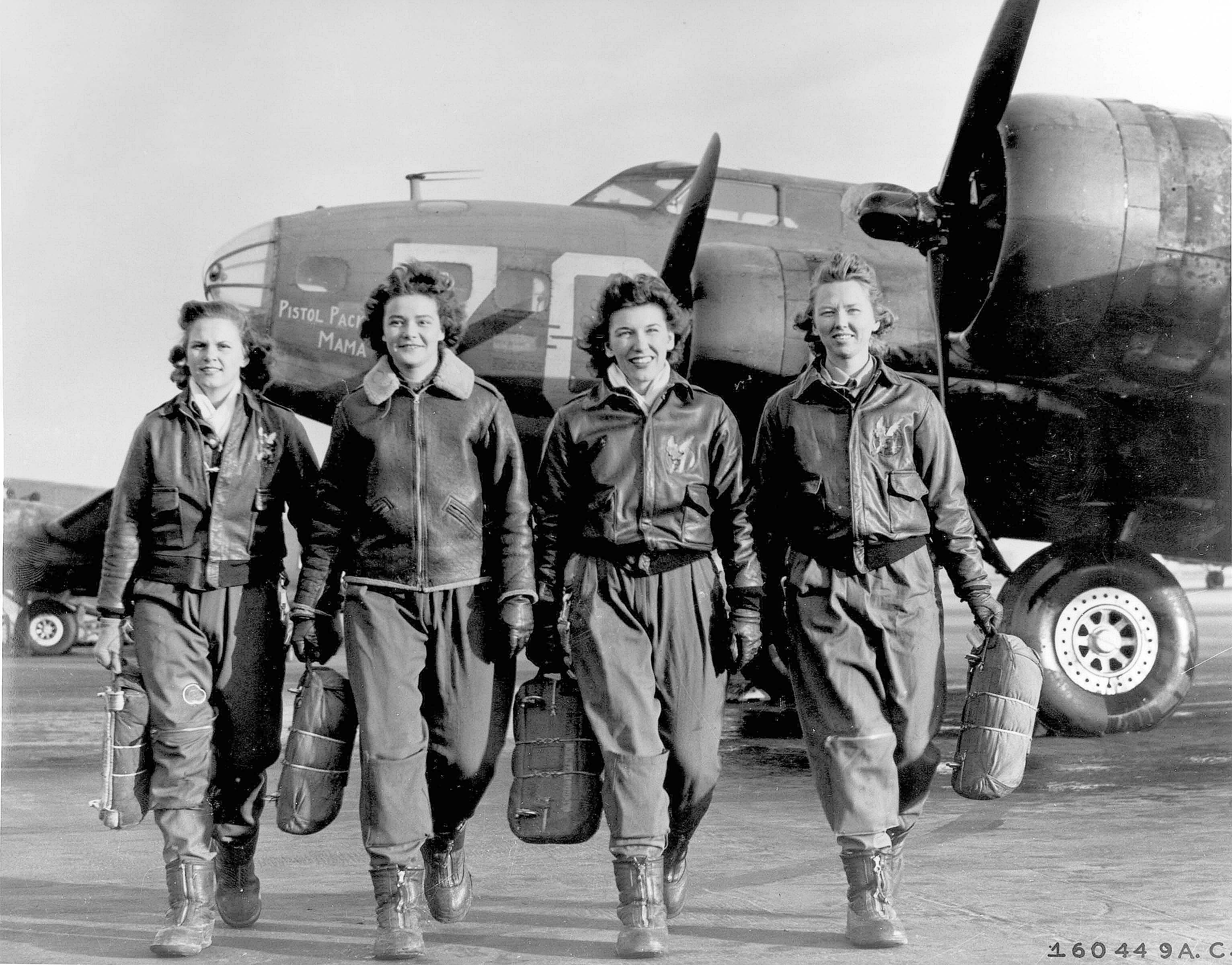
These four female pilots leaving their ship at the four engine school at Lockbourne are members of a group of WASPS who have been trained to ferry the B-17 Flying Fortresses. (U.S. Air Force photo)
Although this is a topic for articles and books, I’ll try my best to sum it up in a blog. Recently I read an article in Smithsonian Magazine about the Verona Project, a counterintelligence project during WWII, that was started by women and where 90% of the code-breakers during the war were women.
Nearly 350,000 American women served in uniform during WWII, both at home and abroad, volunteering for the newly formed Women’s Army Auxiliary Corps (WAACs, later renamed the Women’s Army Corps), the Navy Women’s Reserve (WAVES), the Marine Corps Women’s Reserve, the Coast Guard Women’s Reserve (SPARS), the Women Airforce Service Pilots (WASPS), the Army Nurses Corps, and the Navy Nurse Corps. General Eisenhower acknowledged the vital role of the women in uniform. Women in uniform took office and clerical jobs in the armed forces in order to free men to fight. They also drove trucks, repaired airplanes, worked as laboratory technicians, rigged parachutes, served as radio operators, analyzed photographs, flew military aircraft across the country, test-flew newly repaired planes, and even trained anti-aircraft artillery gunners by acting as flying targets
Both the Army and the American public initially had difficulty accepting the concept of women in uniform. Although they were non-combat positions, many were commissioned officers were sent to specialized schools for training in communications, supply, the Japanese language, meteorology, and engineering
Five million women entered the workforce between 1940-1945. More well-known were the women who worked in factories where men had previously worked. Rosie the riveter became an icon representing the women who worked in factories and shipyards. As an aside, Rosie’s counterpart in Great Britain were the female forestry workers, known as lumberjills.
Many other opportunities opened up such as chemists and engineers developing weapons for the war. This included thousands of women who were recruited to work on the Manhattan Project, developing the atomic bomb.
After the war, it was over for most working women. Social commentators worried that when men returned from military service there would be no jobs available for them, and admonished women to return to their “rightful place” in the home as soon as victory was at hand. Although as many as 75% of women reported that they wanted to continue working after World War II, women were laid off (fired) in large numbers at the end of the war. Women lost footing in the work place so men could resume their roles there. Many of the women did “retired” into housewives and mothers. It would take decades to make up for lost ground.